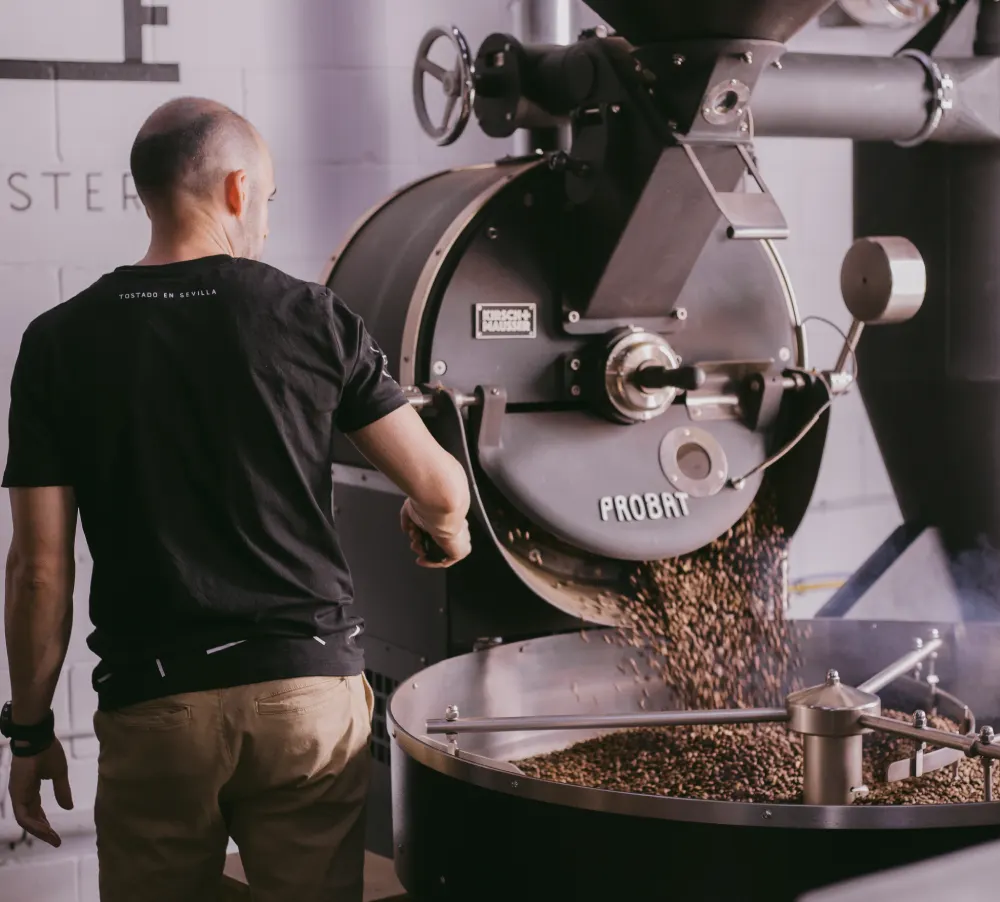- The sculpture, sponsored by ‘The 19th Hole’ of Enjoybcn Group, will be located from October 19 in front of the Urquinaona Tower.
- “El Saltador invites us to penetrate the depths of Barcelona with a new spirit and embodies values such as courage and commitment,” explains Díez.
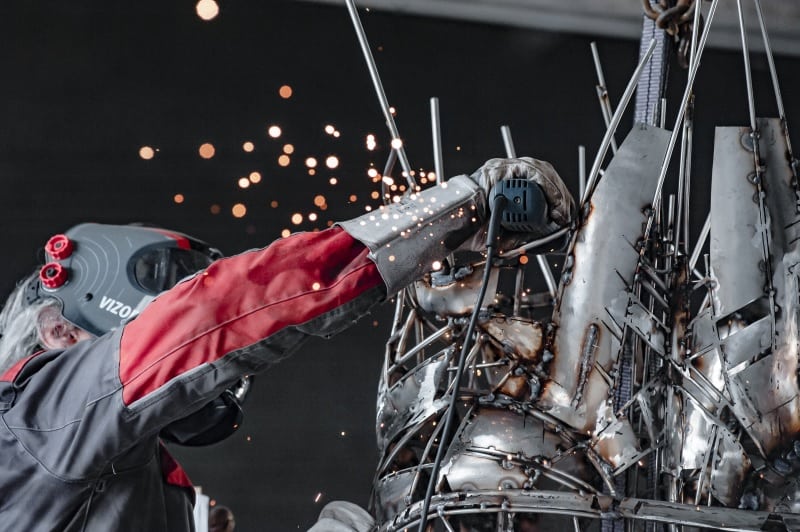 A tribute to Barcelona
A tribute to Barcelona
The international artist Jordi Díez will inaugurate next October 19th El SaltadorThe sculpture pays homage to the city of Barcelona and embodies values such as tolerance, courage and commitment. The work will be located at street level in front of the Urquinaona Tower, at number 6 of the Urquinaona square, and is promoted and financed by the The 19h Hole (the19thhole.barcelona)
business loung
e intended for all those professionals who need a space where they can meet with their clients and work teams for management meetings, in
streaming
product presentations or any type of event.
The sculpture represents a trampoline jumper just at the moment of entering the water. It is strategically placed so that the statue appears to have jumped from the top of the Urquinaona Tower. The jumper is immersed in a steel surface symbolizing the map of Barcelonaa foray that aims to invite anyone who observes it, to enter into a deeper and more valuable dimension of the city from the commitment and determination.
The statue is more than three meters high and is made entirely of Aisi 316L stainless steel (also known as marine steel), with a high capacity to resist corrosion. Jordi Díez has taken almost a year to create the sculpture, a work made entirely by the artist. For the construction of the pedestal, Díez has had the collaboration of the Fundición Artística Vilà, located in the town of Valls, Tarragona.
El Saltador aims to be the contribution of The 19th Hole to the dignification of this public space that has many deficiencies, and to enhance the value of the Urquinaona Tower, built in 1972 by Antoni Bonet.
 Between ancient and modern
Between ancient and modern
In Jordi Díez’s work, the technical and anatomical challenge of classical sculpture converges with the introduction of abstract and deconstructive values of contemporary art. His work, therefore, represents an encounter between the ancient and the modern.
The Jumper is a handmade sculpture made entirely by electrowelding. Starting from a study of the proportions of a professional trampoline jumper, work began with a basic steel outline of the skeleton, on which the basic lines of the musculature were drawn with rods, generating fundamental profiles that were then related to each other, first with steel rods and then with fragments of steel plate.
The piece is inspired by the British trampoline jumper Tom Daley @tomdaley. “I was very struck by what he does,” the sculptor recounts, “both from the point of view of competition and from the point of view of his public life, as he was one of the first elite athletes to go public with his homosexuality and has become an activist for LGTBIQ+ rights.”
In this work, and in Díez’s work in general, there is a convergence of anatomical and volumetric values. anatomical and volumetric values with the drawing of the surface, a kind of tattoo in which the presence of the hollow, of the interior, has as much value as what we could call the skin.
Once the sculpture was completed, it was internally reinforced with a solid a solid structure of solid steel bar, and it was then and proceeded to undergo the chemical finishing treatment of pickling and passivation.
“Stainless steel has the quality of immateriality. It can be said that it actually lacks color: it reflects the color of its surroundings, so that it can be incandescent in a sunset, or blue in a winter dawn. To be in front of a steel sculpture is to be in front of an image that greets us from the other side of reality.“explains Díez.
Jordi Díez models with the air, imprisoning it with steel fragments in an open form, respecting the presence of emptiness, inviting the viewer to complete what he sees. In his work he does not seek to express the outer bark, but the vitality, the inner energy.
 A message to the city
A message to the city
El Saltador invites us to immerse ourselves in the city of Barcelona and not stay on the surface. It is not only an architectural and urbanistic immersion, but also a cultural and social one. An invitation to know, discover and understand. And, by extension, a call for understanding and tolerance. In short, a tribute to tolerance in Plaza Urquinaona, perhaps the most convulsive place in the city.
For Jordi Díez, The Jumper invites us to penetrate the depths of the city with a new spirit, thus accessing a level beyond the surface, beyond appearance, “to the heart where the strength of an eternal city full of treasures beats”. The action of complete immersion implies leaving behind any reservations and penetrating a reality different from the ordinary one. More powerful, more profound. “This action provides the vision of that reality that is otherwise unattainable,” he adds.
In El Saltadoraccording to Díez, we also have an evident expression of the
carpe diem
to seize the moment in the face of transience. In parallel, and reinforcing this concept, is that of penetrating the impossible: “The fact that a figure penetrates a solid steel surface, turning it into fluid, dilutes the frontier of the reasonable, infinitely expanding reality. It is through determination, surrender and trust that we access a vital flow much more powerful than normal. From here the meaning is diluted in the indecipherable, which is where art develops all its power”.
A work of art is not complete, according to Díez, until the receiver – in this case the people of Barcelona and their visitors – play their role as critic or spectator. “From the moment the sculpture is made available to the city, its vitality will depend on the citizens. My wish is that there are glances, of course attentive, still, but also passing, fleeting, almost unconscious. And that these glances give the beholder an idea of strength, of dedication and courage, of the values that it manifests
The Jumper
“explains the artist.
According to Diez, “a public work implies a great responsibility. It will be part of many people’s daily lives, and it will be an occasional accent in the lives of many others. Public sculpture is a message that is sent to many people, including those to come. At this point in the century, any message that meets these conditions must necessarily be positive and universal, as is the case of
The Jumper
“.
Jordi Díez, the steel artist
Jordi Díez Fernández was born in Valladolid, Spain, on March 5, 1966. He currently lives and works in Centelles, Barcelona. He opened his first workshop in 1989 in Fresnedillas de la Oliva (Madrid). There, isolated for three years, he configured the sculptural concept of his work.
The expression of the human figure is the axis on which his work revolves.
In the different stages of his career, he has used all the materials typical of his craft: stone, iron, wood and terracotta. For Jordi Díez these materials are the prelude to work exclusively with stainless steel, a metal in which he finds the expressive potential he needs for his works, leaving behind the discourse of virtuosic representation and giving way to the interior, to the inner energy.
In this formal research he fully encounters the presence of the void, the emptiness, the deconstruction of the surface. Thus, Jordi Díez uses the metal strictly necessary to imprison the air that contains the form, reaching a degree of synthesis and lightness that enhances the expression and the feeling of being in front of the reality that lies behind the tangible.
His work is spread all over the world in museums, temples, public spaces and private collections.
Jordi Díez’s public works are located at Paris (Monument to Rafa Nadal, Roland Garros) Barcelona (Horizon Head, Plaza de la Catedral | Homage to Carlos Martínez & Jos Galán Arquitectos, Glories Shopping Center | Lita and Steel Loverls, Hotel ME Barcelona), Lyon (The lifeline at Kratos Safety), Madrid (Leda), Utrera (Abate Marchena), Centelles (Monument to Ildefons Cerdà), Sant Sadurní d’Anoia (Age Quod Agis at Bodega Can Bas), Vic (Saint Hippolytus in the Diocese of Vic), Vinarós (Monument to the Brotherhoods of Vinarós) and Escaldes-Engordany, Andorra (Nefer 2.0).
The two great referents of the author, which appear in his works in a more or less tangible way, are Beethoven y Michelangelo. “To me they are virtually indistinguishable,” he says. He also draws influence from Donatello, Phidias, and Thutmose, “the sculptor of the portentous bust of Nefertiti”, one of the finest
sculptures of history. As for specific pieces, the influence of the Victory of Samothrace, the Laocoon or the Torso of Belbedere stands out, as well as the Catalan modernist tradition, with sculptors such as Josep Llimona, Josep Clarà and Miguel Blay y Fàbrega.


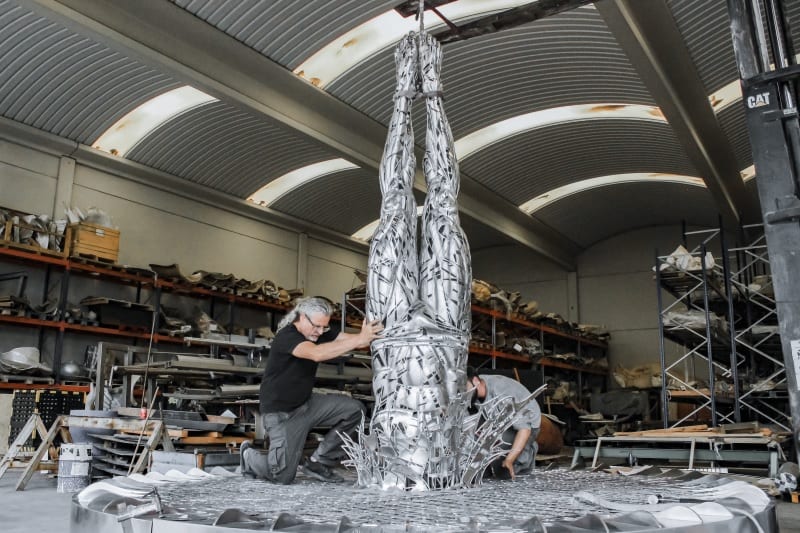 Between ancient and modern
Between ancient and modern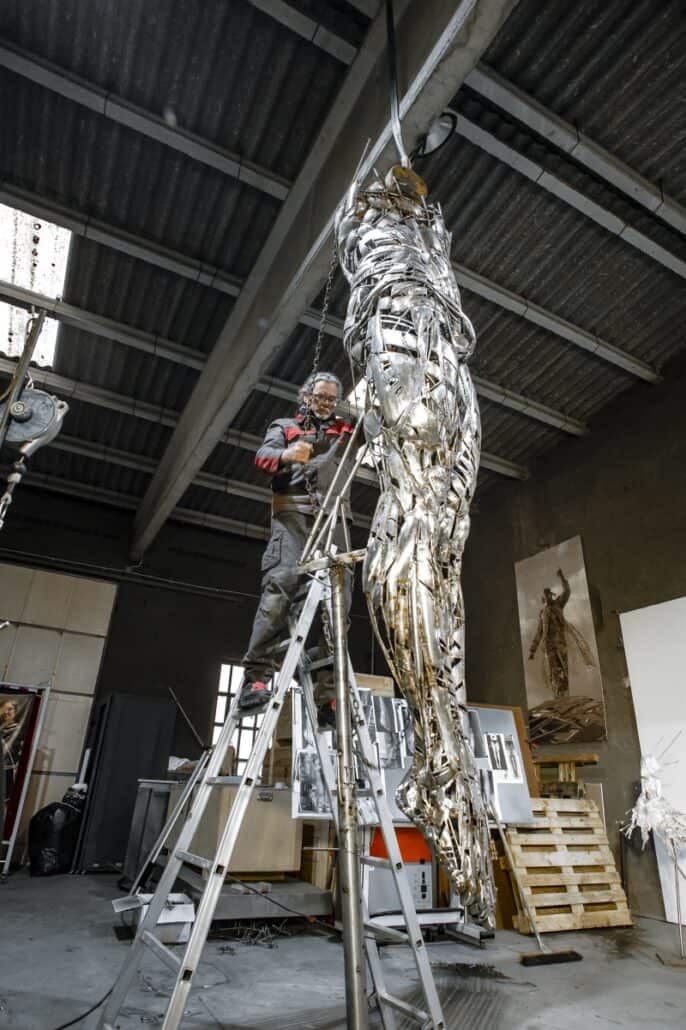
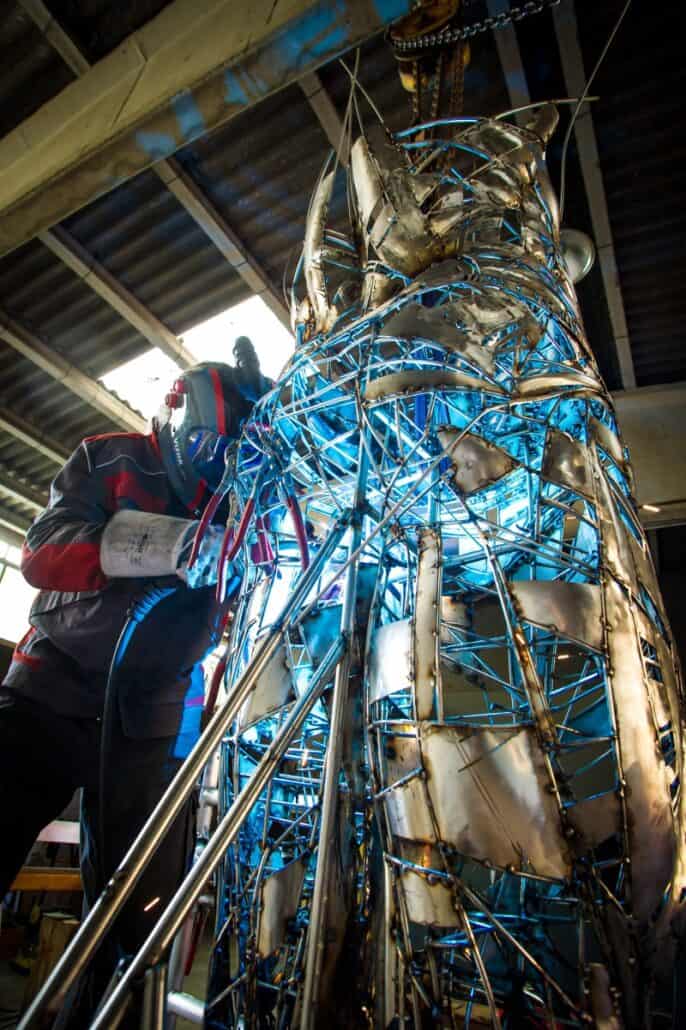 A message to the city
A message to the city